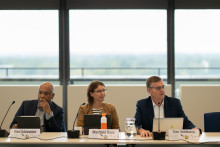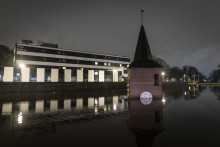'Future-proof BSc and MSc education from an operational perspective' is the title of the document discussed – and one of the so-called 'building blocks' that should help the UT recover financially. Part of this is a recent analysis of the costs of UT study programmes.
Sixty students
Perhaps the most striking conclusion in that analysis: a UT bachelor's programme needs sixty students every year to break even. In other words, any programme with fewer than sixty students is usually losing money. According to the analysis, this applies to too many UT programmes. And if you take into account the dropout rate of about 35 percent of the students, then every bachelor's program needs an intake of at least eighty students.
High dropout rates
What the working group's analysis also concludes is that there is not so much inefficiency in educational practices, such as a multitude of tests. Nor are there high costs associated with the central support provided by the CES service. What does play a significant part: 'High dropout rates in some programmes are a major cause of the budgetary inefficiency of these programmes'. For example, the analysis compared nine different study programmes, with dropout rates ranging from 25 percent to 50 percent.
There is also room for more cost-efficient operations in other areas, according to both the responsible working group and the University Education Committee. Both in overhead costs at faculty level and in facility costs, as well as in education-related measures to curb costs. The main advice is therefore that every UT programme is given a mandatory budget and must stick to it.
University Council critical
However, the University Council put on the brakes on Wednesday morning with an unsolicited advice. Although the insight into the costs is more than welcome, the Council is critical of the way in which 'data, parameters and assumptions' were used and formulated. In particular, the Council criticises the fact that study programmes and their respective directors were hardly involved in the development of the analysis.
The Council also questions the starting point: cutting back on education from a vision, instead of seeing it as an operational exercise. 'Decisions should be made on the basis of the university's vision of education, rather than our education being guided solely by choices to optimise costs', is how Oliver Davies of student party UReka expressed the council's position.
Rector Tom Veldkamp responded that this analysis is a first step and that programme directors will be involved in the next steps. In addition, he insisted that a programme director, especially for the quality of a programme, is in charge. 'What this mainly adds is that we make the financial dimension of providing a programme more clear.'
New distribution model
What's next? The measures to make UT education more cost-efficient will be further elaborated in the coming period. It will then be back on the table with the Executive Board – and the University Council.
What will also play a role is the distribution model for education – i.e. which programme receives how much money and how it is calculated. Both the University Council and the rector agree that the current model is not completely fair and should be revised. According to Veldkamp, there are several scenarios on the table for this, but it will certainly not be until after May 2025 before a new model is ready. 'I don't want to change the entire system and create more unclarity. We may be able to come up with a temporary quick fix to make the system fairer in the short term, but in the long term we want to have a vision in which every programme is valued equally.'







